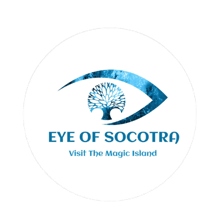Natural Attractions on Socotra
The Natural Wonders of the World's Most Isolated Island
4/13/2025
Socotra – an archipelago in the Indian Ocean, located about 340 kilometers off the coast of Yemen – is often described as the "most alien landscape on Earth." Its remote location and ancient ecosystem have led to an extraordinary level of biodiversity found nowhere else. About one-third of Socotra's plant species are endemic – including the famous Dragon’s Blood Trees. With over 700 endemic species, Socotra ranks among the planet’s most significant biodiversity hotspots. This article takes you on a detailed journey through the island’s most fascinating natural attractions.
The Dragon’s Blood Trees (Dracaena cinnabari)
The symbol of Socotra is the Dragon’s Blood Tree – a unique umbrella-shaped tree that looks like it belongs on another planet. Its red resin, known as "dragon's blood," has been used since antiquity as medicine, dye, and incense. The tree mainly grows on high plateaus such as the Diksam Plateau and in the Hajhir Mountains. Scientists believe the tree’s shape evolved as an adaptation to capture moisture from mist in the dry highland climate. This species is endangered, as natural regeneration is rare – conservation efforts are urgently needed.
Socotra has a coastline of over 300 km with countless pristine beaches. Notable spots include:
Qalansiyah Beach:
Qalansiyah Beach is one of the most breathtaking and iconic locations on the island of Socotra. Stretching over several kilometers along the northwest coast of the island, this beach is renowned for its powdery white sands, crystal-clear turquoise waters, and dramatic mountainous backdrop. It is often the first stop for travelers arriving in the nearby town of Qalansiyah, a quiet fishing village that retains much of its traditional charm.
Qalansiyah Beach is located approximately 50 kilometers west of the island’s capital, Hadibo. The region is part of the Socotra Archipelago UNESCO Biosphere Reserve, emphasizing its ecological significance. The beach itself is flanked by towering limestone cliffs and rolling sand dunes that descend directly into the sea. These cliffs provide a striking contrast to the vibrant blue waters and offer panoramic viewpoints, particularly at sunrise and sunset.
Detwah Lagoon:
Detwah Lagoon is a stunning and ecologically vital wetland located just west of the village of Qalansiyah on Socotra’s northwest coast. Recognized as a UNESCO-protected site, the lagoon is known for its shallow, crystal-clear waters that shimmer with bioluminescence at night, creating a magical glow along the shoreline. Surrounded by sand dunes and rocky cliffs, the lagoon forms a serene landscape that supports a rich diversity of life. It serves as a habitat for many migratory and endemic bird species, including herons, flamingos, and ospreys, making it a popular destination for birdwatchers. The waters are also home to crabs, small fish, and occasionally baby stingrays, adding to its ecological richness. Due to its shallow depth, Detwah is ideal for wading and peaceful exploration, but motorized boats are prohibited to preserve its fragile ecosystem. The area is a favorite for nature lovers and photographers seeking Socotra’s untouched beauty.
Shoab Beach:
Shoab Beach is one of the most remote and pristine coastal gems of Socotra. Located at the far western tip of the island, it is only accessible by boat—typically via a scenic ride from Qalansiyah that often includes dolphin sightings along the way.
This secluded stretch of coastline boasts powdery white sand, calm turquoise waters, and complete silence, broken only by the gentle sound of waves and seabirds. The absence of roads or infrastructure has kept Shoab untouched by development, offering a rare sense of isolation and raw natural beauty. At sunset, the area becomes especially magical as pods of dolphins frequently pass through, sometimes following the boats playfully. Shoab is ideal for swimming, beach picnics, and experiencing Socotra’s wild coastline at its most peaceful.
These beaches are not only visually stunning but are also ideal for snorkeling, kayaking, or simply relaxing in nature.
The Diksam Plateau & Wadi Dirhur Canyon
The Diksam Plateau, situated between 700 and 1,000 meters above sea level, is one of the best places to see Dragon’s Blood Trees in their natural habitat. The plateau’s stark limestone formations, combined with rare plants like the Desert Rose (Adenium obesum socotranum), create an almost surreal landscape. The adjacent Wadi Dirhur is a deep canyon with a year-round stream – one of the few freshwater sources during dry periods. Hiking through the wadi is challenging but highly rewarding.
Arher Sand Dunes & Freshwater Springs
On the northeast coast, massive sand dunes – up to 150 meters high – cascade directly into the sea, creating a unique geological spectacle. Below the dunes, freshwater springs fed by mountain mist and rain emerge, used by campers and nomads. The Arher dunes are a favorite camping site, offering panoramic ocean views and magical sunrise/sunset light conditions.
Hoq Cave
A Journey into the PastHoq Cave is one of the island’s largest limestone caves, explored for more than 3.2 kilometers. It features well-preserved stalactites and stalagmites and contains ancient inscriptions in several languages, including Greek, Brahmi, and Himyaritic. These inscriptions confirm that Socotra was once a key trading stop on the maritime Silk Road between India and the Mediterranean. The cave has a unique microclimate with stable temperatures and high humidity.
Endemic Wildlife – Birds, Reptiles, and Marine Life
Socotra is a true haven for bird enthusiasts, home to at least seven endemic bird species found nowhere else on Earth. Notable examples include the Socotra Sparrow (Passer insularis), the Socotra Starling (Onychognathus frater), and the vibrant Socotra Sunbird (Chalcomitra balfouri). These species have evolved in isolation and are uniquely adapted to the island’s landscapes.
In addition to its endemic birds, Socotra serves as an important stopover for migratory birds traveling between Africa, Arabia, and Asia. Wetlands like Detwah Lagoon and coastal cliffs provide ideal resting and nesting grounds, making the island one of the most significant birdwatching destinations in the Arabian Sea region.
Socotra is considered a reptilian biodiversity hotspot, with over 30 reptile species found nowhere else in the world. The island's arid climate and unique geology have created ideal conditions for the evolution of highly specialized reptiles. Among the most common are endemic geckos and skinks, many of which display striking patterns and behaviors adapted to the rocky terrain and heat. These reptiles are often spotted sunning themselves on limestone outcrops or hiding in crevices during the hottest part of the day.
Their diversity and adaptability make Socotra an important site for herpetologists and nature lovers interested in island evolution and desert ecosystems.
Marine Life: Socotra’s coastal waters are home to over 250 coral species and 730 coastal fish species, along with dolphins, manta rays, and occasional whale sharks. UNESCO has designated large parts of the coastline as a biosphere reserve.


